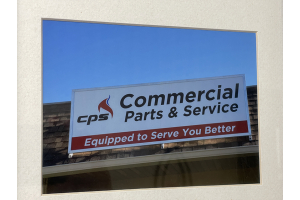Tips For Designing Your Food Truck

As summer swings into full gear, you’re likely to see many food trucks. Whether they’re parked at a local fair or festival, or simply an open parking lot, these food trucks can attract many customers. Some even have a dedicated following that keeps tabs on their location through social media. If seeing lines of customers outside your local food trucks has you dreaming of opening your own, check out our tips for designing your food truck below. Due to the limited space available in a food truck, it is crucial that you think carefully about every piece of commercial kitchen equipment you purchase and that you conserve as much space as possible.
- Know exactly what you’ll be serving
The key to any efficient kitchen is to limit the number of dishes you offer. When it comes to a cramped food truck, the importance of limiting your menu is even greater than in a typical restaurant kitchen. This is because you simply don’t have the space to store excess equipment and supplies. You need to choose a few key items that you are confident will sell well. Once you have determined what these items will be, you should design your truck around making these dishes as quickly and efficiently as possible.
- Map out what you’ll need
Once you have finalized your menu, you’ll need to determine what equipment each dish will require. For example, if you’re selling french fries, you’ll need a fryer and if you’re selling pizza, you’ll need an oven to cook it in. If you find that the amount of large commercial kitchen equipment you’ll need won’t fit into your food truck, it’s time to go back to your menu and cut items until your equipment needs are manageable.
- Start Shopping
Once you know what equipment you’ll need, it’s time to start shopping. In addition to looking for the lowest possible prices, you’ll need to consider your fuel source and your space constraints. Typically, food truck equipment is powered by an electric generator, gas, or propane. Each source of fuel has its pros and cons and you’ll need to research local fire safety regulations to determine which fuels you can use. In addition to selecting the right fuel source, you’ll need to determine exactly how much space you can afford to give each piece of commercial kitchen equipment. It is important, however, not to always simply select the smallest possible equipment as doing so may mean you’ll be unable to keep up with demand which will hurt your business. The key to success is to find a balance between saving space and being able to meet demand.
We hope these tips will help you to outfit your food truck with everything you need! When it’s time to service your commercial kitchen equipment, be sure to give CPS a call.




